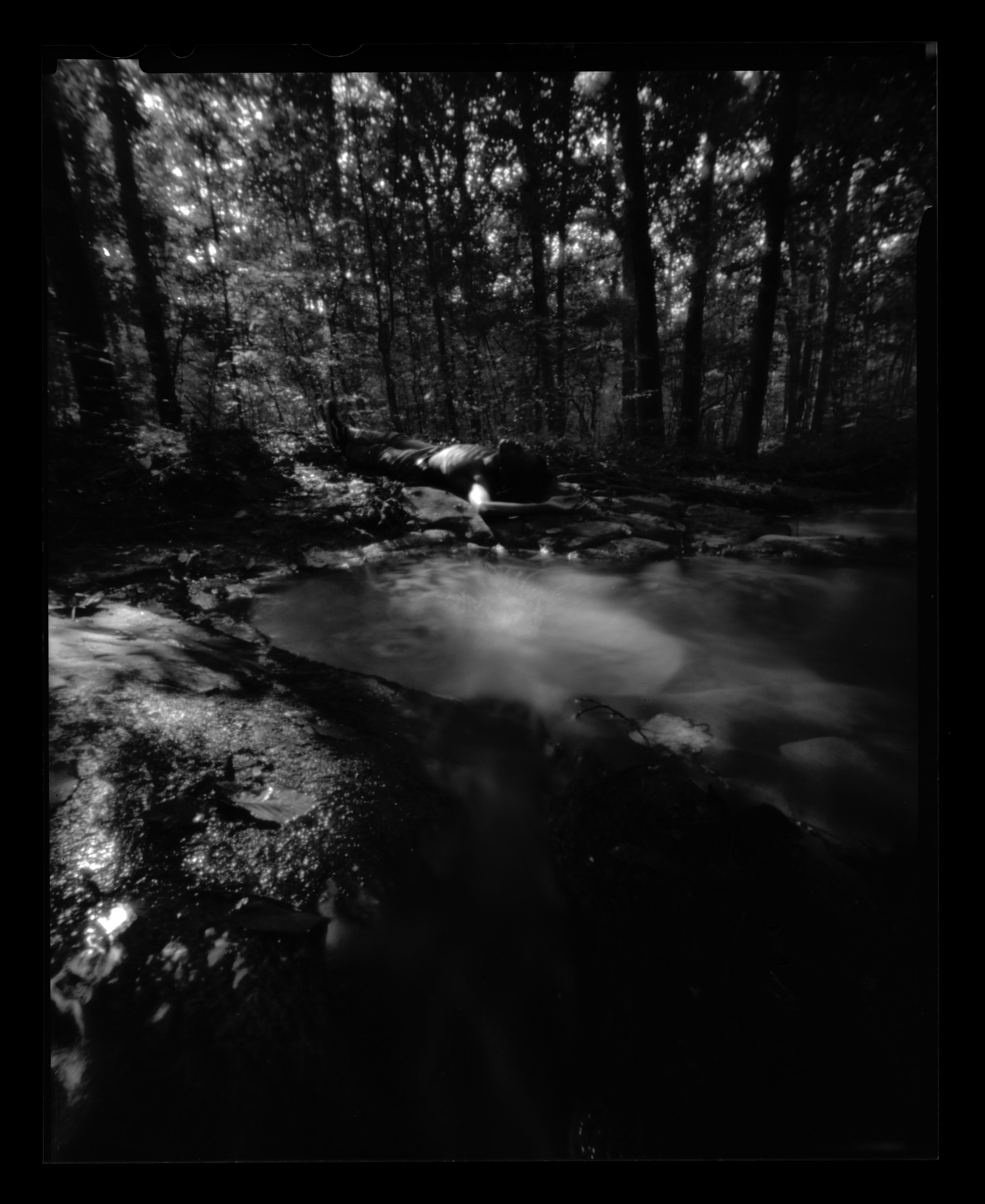Ephemeral Skin
Late 19th and early 20th-century photography was greatly influenced by the pictorialist movement. Pictorialist photography championed soft-focused, romantic images that were emotionally or symbolically charged and removed from the everyday world. Typically, pictorialist imagery featured nude female models in dreamy settings that romanticized their connection with the natural world. These photographs were made by white, cis-gendered men and women of the upper classes.
My project reimagines the classical pictorialist vision by choosing to depict Black, male, and queer bodies. Images of Black men, languid, and nude in the landscape, challenge the inherent whiteness of pictorialism. I am claiming this visual space for a new type of figure. In my photographs, the natural world is melded with the bodies of the marginalized person. Black bodies and Black hair share the same gray values of the bark, moss, and leaves on the trees.
The Western world dissects, probes, and destroys the finite earth beneath our feet with a cosmological view of our surrounding universe as dead or inanimate. In contrast, People of Color and marginalized communities can operate in a space beyond the traditional Western perspective of nature. One act by People of Color that rejects Western social conditioning is to allow for one's hair to remain natural. Natural Black hair has been used as a political statement, but it is also seen as unprofessional, unkempt, or dirty. Through this work, I want to convey the way one’s hair and body provide an affinity with the natural world.
My photographs are meant to disturb the established trope of the “nude in the landscape” by replacing the standard subject of the viewer’s gaze: the white body. Through this work, one can see the beautiful imperfections of the soft Black body which strongly rejects the objectification that is so often socially pressed onto it.
These photographs were taken with both Holga cameras (a plastic toy camera) and pinhole cameras. I used medium and large format film, processed the film in the darkroom, and then scanned the negatives. The digital files were adjusted using Photoshop and then printed as digital pigment prints on velvet fine art paper. I also printed my negatives using the cyanotype process, a hand-applied photographic emulsion that allows for brushstrokes and shifts in tone and color, qualities sought often by pictorialist image-makers.

Caleb by the River #2

Fractaled Visions

Transcendental Dreams

Caleb by the River: Transient Being

Untitled

Self

Untitled